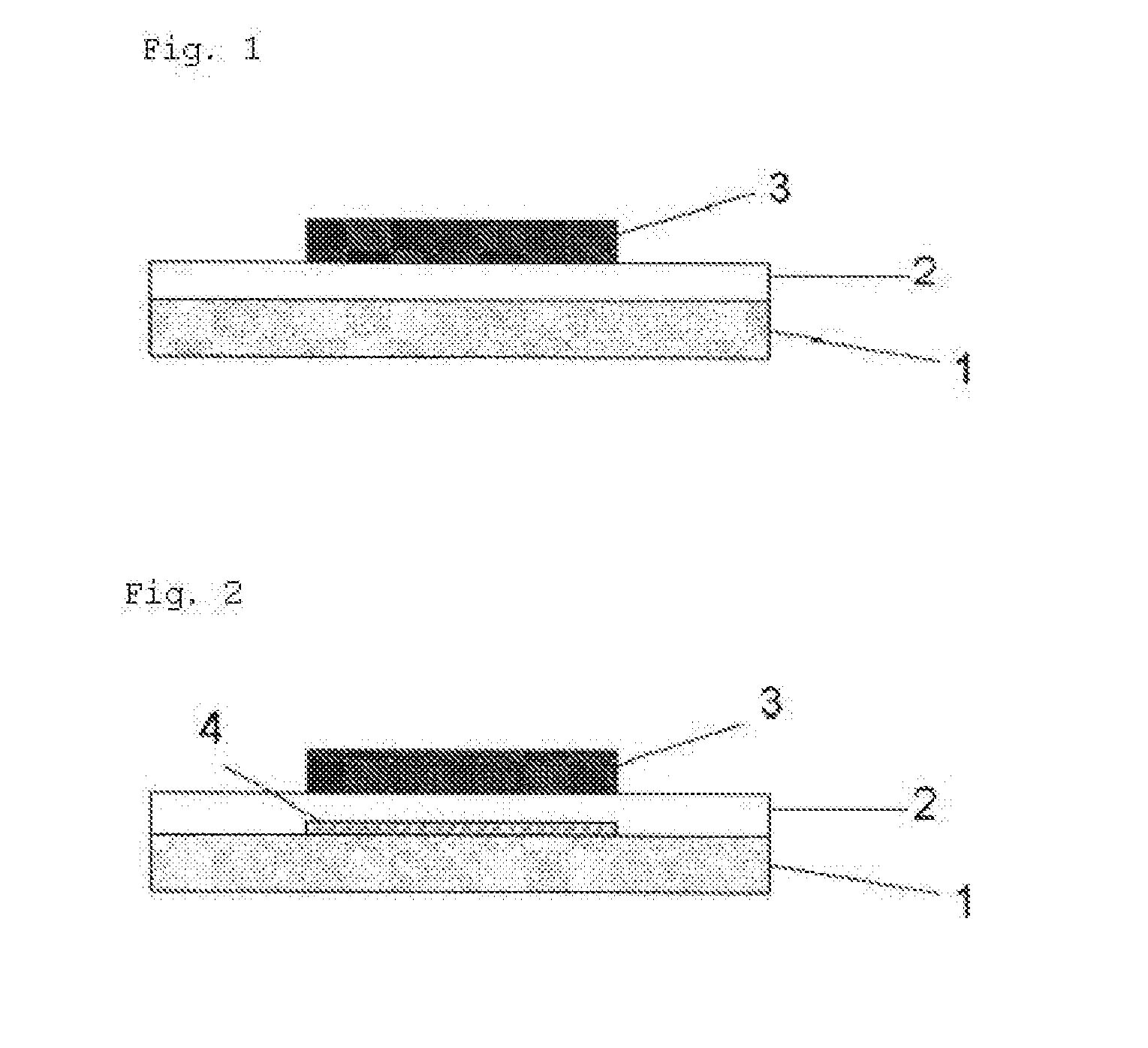Plasma processing detection indicator
a technology of detection indicator and processing process, applied in the direction of measuring device, electric discharge tube, instruments, etc., can solve the problems of fine fiber pieces or coloring pigment to be generated, and achieve the effect of excellent
- Summary
- Abstract
- Description
- Claims
- Application Information
AI Technical Summary
Benefits of technology
Problems solved by technology
Method used
Image
Examples
example 1
[0116]A white PET film having a thickness of 188 μm (“Crisper K2323” produced by Toyobo Co., Ltd.) was prepared as a base material. A non-color-changing layer having a thickness of 10 μm was formed on the base material using an ink for forming a non-color-changing layer (“Diatone Ecopure SOY HP J” produced by Sakata Inx Corporation).
[0117]Next, a PET film having a thickness of 25 μm (“PET25A PL Shin” produced by Lintec Corporation) was dry-laminated on the non-color-changing layer to form a resin-based transparent cover layer.
[0118]Subsequently, a color-changing layer having a thickness of 5 μm was formed on the transparent cover layer using an ink A for forming a color-changing layer.
[0119]As a result of the above process, an indicator was prepared.
Composition of the Ink a for Forming a Color-Changing Layer
[0120]
TABLE 1Pigment Green 7 (phthalocyanine colorant)8PA-100 (polyamide produced by T&K)7.1Nitrocellulose RS7 (nitrocellulose produced by SNPE3.6Japan)Butyl Cellosolve64.3Aerosi...
example 2
[0121]A white PET film having a thickness of 188 μm (′Crisper K2323″ produced by Toyobo Co., Ltd.) was prepared as a base material. A PET film having a thickness of 25 μm (“PET25A PL Shin” produced by Lintec Corporation) was dry-laminated on the base material to form a resin-based transparent cover layer.
[0122]Next, a color-changing layer having a thickness of 5 μm was formed on the transparent cover layer using an ink B for forming a color-changing layer.
[0123]As a result of the above process, an indicator was prepared.
Composition of the Ink B for Forming a Color-Changing Layer
[0124]
TABLE 2Pigment Yellow 3 (disazo pigment)5Pigment Green 7 (phthalocyanine colorant)7PA-100 (polyamide produced by T&K)7.1Nitrocellulose RS7 (nitrocellulose produced by SNPE3.6Japan)Butyl Cellosolve62.3Aerosil R-972 (silica produced by Nippon Aerosil12Co., Ltd.)Nikkol CA2580 (quaternary ammonium salt surfactant3produced by Nikko Chemicals Co., Ltd.)Total100
example 3
[0125]An indicator was prepared in the same manner as in Example 1, except that the resin-based transparent cover layer was formed using a polyester resin solution (“Sundhoma” produced by DIC Corporation). More specifically, a transparent cover layer having a thickness of 10 μm was formed by repeating silk screen printing six times using the polyester resin solution.
PUM
 Login to View More
Login to View More Abstract
Description
Claims
Application Information
 Login to View More
Login to View More - R&D
- Intellectual Property
- Life Sciences
- Materials
- Tech Scout
- Unparalleled Data Quality
- Higher Quality Content
- 60% Fewer Hallucinations
Browse by: Latest US Patents, China's latest patents, Technical Efficacy Thesaurus, Application Domain, Technology Topic, Popular Technical Reports.
© 2025 PatSnap. All rights reserved.Legal|Privacy policy|Modern Slavery Act Transparency Statement|Sitemap|About US| Contact US: help@patsnap.com



